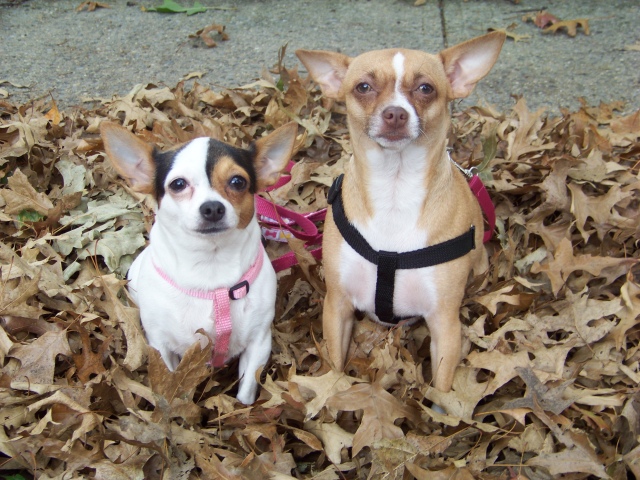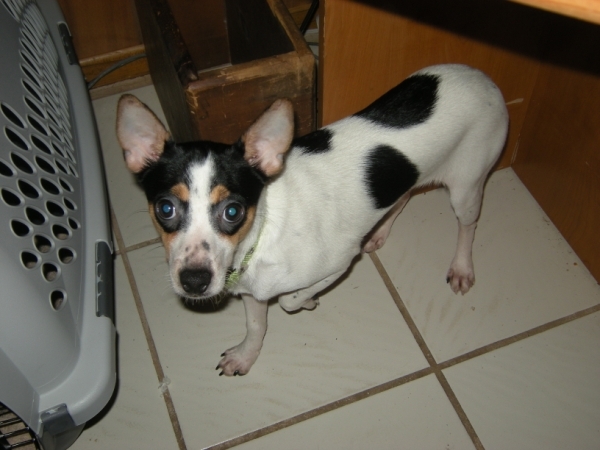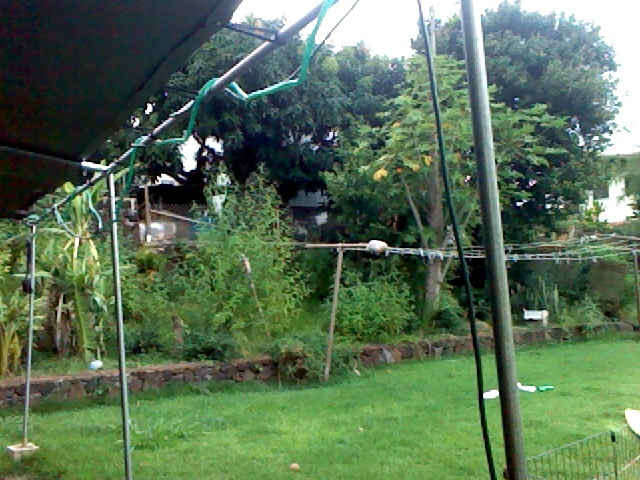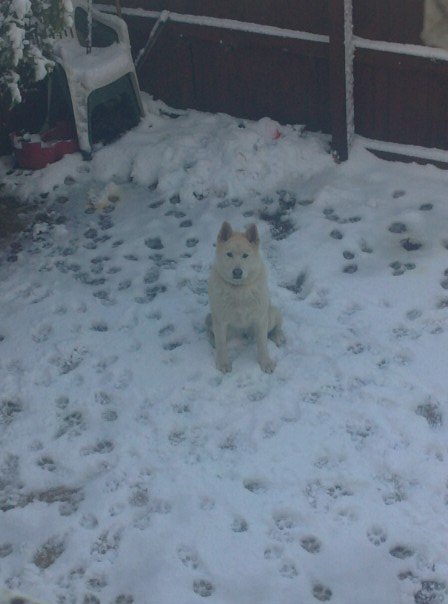QuestionI have a two year old Pomerianian. I have problems with his constant yelping whenever we try to leave him or when I get home and he's overexcited. I also have problems with my cutie using the bathroom on things he shouldn't, especially corners (beds or drawers). He generally uses the pee pads. What can I do to train him to behave better? He's a very smart dog and behaves fine otherwise.
AnswerAs always, make sure you have a clean bill of health from your veterinarian.
I am including basic house training information for you and would suggest you look into a product called a belly band that can at least block some of the urine from hitting the intended targets. http://www.bellybands.net/
You can find additional helpful information on my web site at http://www.OutlawChinooks.com or my blog at http://RileyTrainingCenter.blogspot.com
Let me know if you have additional questions. Good Luck!
Dog - Potty Training Basics
Going to the bathroom in the house is one of the biggest issues for new puppy owners. You can easily win the battle if you are consistent, patient, use supervision, utilize confinement and reward your pup with scrumptious treats. Remember, you are teaching your puppy where to relieve him or herself rather than where not to relieve him or herself.
One of your first steps is to choose a place that you want your pup to eliminate. Once you have chosen the spot, always take your pup on leash to the spot and stand there for three to five minutes. If you don't have success, take pup back inside and place them in their crate. When you are home, make this trip every hour or two and praise success with voice and treats to expedite the learning process. You pup will quickly learn that elimination bring tasty rewards.
Use a Crate. Most dogs love their "den" as long as it is the right size. If it is too big, part of it will become a bathroom. If it is too small, it is uncomfortable. Your pup should have enough room to stand up, turn around and lay down. When pup is in the crate, provide a food stuffed chew toy like a Kong so pup has something to occupy the confinement time. The crate should help you predict when the pup needs to "go" so you can teach pup where and why it needs to eliminate outdoors.
Outside Time: Puppies need to relieve themselves frequently. Ideally, your pup should go outside every two hours.
Same Time, Same Place: Take pup out on a six-foot leash and stand in the place you want pup to "go." Praise pup for "going" in the right location.
Boo Boo? Show pup his mistake and let him know he was wrong with a firm "No!" Take pup outside and show him how you want it done. (Not literally!)
Don't rub pup's nose in "it" unless you want him to eat "it."
Don't smack him with a rolled up newspaper unless you want him to eat it. If you want to hit something with a newspaper, roll it up and hit yourself for not paying more attention to pup's needs.
Feed to Succeed: A high quality, nutritional, highly digestible diet keeps odors, waste and trips outside to a minimum.
Take pup out:
After eating
After napping
After a play session
First thing in the morning
Last thing at night
When his eyes are crossed
The biggest key to house training success is consistency. The more consistent you are with pup, the quicker pup will give you the desired response. When pup relieves himself outside, pup earns more free time inside your home. One quick method is alternating freedom and confinement.
On a basic level the following guidelines will help you train your puppy:
Follow the house-training schedule strictly. If pup has an accident you have allowed too much freedom.
While standing in one spot with pup on a leash, allow two minutes for relieving himself. Reward immediately (within one second) with a treat or praise after the desired behavior.
Holding "it" all night is the first stage to successful housebreaking.
If your puppy whines and cries at night, please try to ignore the commotion and go back to sleep. (This applies unless pup is hurting itself.) If you get up even to reprimand pup for making noise, you have just shown your pup that you will get up at night. Occasionally dogs must relieve themselves at night, and ignoring will lead to a big mess in the morning. You can respond to the pup's warning by allowing pup out for only two minutes.
For an easy routine to assist in quickly training your pup to "go outside" and avoid most accidents, follow this simple schedule:
In the morning, carry your pup outside and place it on the ground (attached to your leash) that you have designated as the bathroom. Give your command to "go to the bathroom" or "potty" or "tinkle" or some other suitable phrase. Allow two minutes for a response. Gently repeat the command (in a tone of voice like you use with your coworkers) and as soon as pup responds, reward immediately. Remember to bring your reward treat with you no matter how optimistic or pessimistic you feel.
If pup fails to respond within the allotted time, carefully take it inside and place it back in the crate until you are dressed and ready to try again.
When your pup responds correctly, give lots of praise and of course your scrumptious treat. Giving the treat reinforces the desired behavior.
Now pup is going to the bathroom outside and can earn some freedom in your home. The following table shows a suggested daytime schedule.
Goes to the bathroom outside
1/2 hour free time
1-1/2 hours of confinement
This routine continues until pup learns to "go" on command and earns your trust. At that time you can allow more freedom then go to the next level.
Goes to the bathroom outside
1 hour free time
2 hours confinement
This routine continues until pup is doing well. At that time you can allow more freedom.
Goes to the bathroom outside
2 hours free time
2 hours confinement
This entire process may take up to six weeks. Follow the basics covered here and DON'T become discouraged. They are only pups once and we should enjoy all aspects of new companion's lives.
~~~
Urine Territory Marking
Dogs are territorial animals and some may show desire to have their own area by urinating or defecating in particular places. True urine-marking is not a house soiling problem, but a territorial behavior. To get your dog over this undesirable behavior, it is important to understand why he is marking territory. As with most things, take the dog to the veterinarian to rule out any medical issues that might make him have this behavior.
Territory marking behavior usually is usually small amounts of urine and primarily on vertical surfaces. Most male dogs lift their leg, but not all of them assume that posture. Unaltered males are far more likely to mark territory, and often claim new items that you bring into the house to stake their claim as quickly as possible. If there are other dogs in the house, the dog may feel compelled to establish dominance by urine-marking. Some males will also mark if the see or smell other animals in their perceived territory. Many males also mark frequently on walks to let other dogs know they have been through the area.
Sometimes neutering helps stop the territory marking, but if the pattern is well established that may not be a simple solution. There could be some conflicts between animals and even between the dog and the people in the home that are contributing to this behavior. Training would be a good solution to resolve these concerns. You can also restrict his access to doors and windows where he can see other animals outside.
To help resolve some of the concerns indoors, clean the marked areas thoroughly with something like Petastic or a similar enzyme cleaner that removes the stain and scent. Don't use strong smelling cleaners as these often trigger more marking behavior to refresh the spot and reclaim that territory. Dogs do not like to live where they eliminate so you can try to change the areas that he marks in to somewhere with a new purpose. For example, playing, feeding and treats in previously marked territory can change the behavior in those locations.
Watch your dog when he is inside for signs that he is thinking about urinating. When he begins to urinate, interrupt him with a loud noise and take him outside. If he urinates outside, praise him and give him a treat. When you're unable to watch him, put your dog in confinement like a crate or small room where he has never marked or you can put a leash on him so he is always right by you for better supervision.
You could also incorporate into your training the "No Free Lunch" non-confrontational leadership role where your dog needs to work for everything he wants from you. For example, he would need to sit before he got a treat, dinner or a toy. This leadership system is effective and can help enhance you relationship. There are lots of good examples of this on the Internet, or you can check with local trainers for more information.
Don't punish the dog after the fact. If you don't catch him in the act, any correction would be ineffective. Your dog isn't trying to be spiteful with this behavior, he is simply reaffirming his claim on the territory you share.
~~~

 My dog eats poop
Question
thats luna to the righ
Hello, how are you? I h
My dog eats poop
Question
thats luna to the righ
Hello, how are you? I h
 Potties insides but NEVER outside...
Question
This is my buddy :)
I have a 6 month old Fox T
Potties insides but NEVER outside...
Question
This is my buddy :)
I have a 6 month old Fox T
 My dog just cant seem to get the hang of peeing or pooping outside.
Question
This is Trevor
Im a twin and I am a boy. My si
My dog just cant seem to get the hang of peeing or pooping outside.
Question
This is Trevor
Im a twin and I am a boy. My si
 Designating bathroom area
Question
backyard
I have 2 medium mutts that are both b
Designating bathroom area
Question
backyard
I have 2 medium mutts that are both b
 Dog Training And Punishment?
Question
Maya
hi there i have an akita X husky,
Dog Training And Punishment?
Question
Maya
hi there i have an akita X husky,